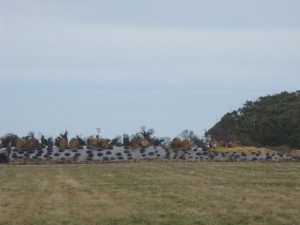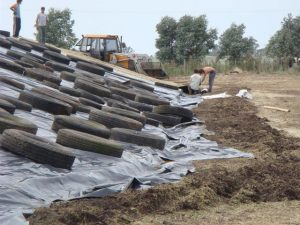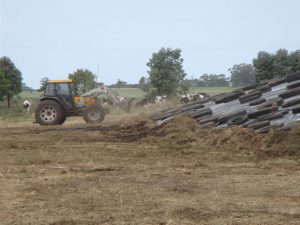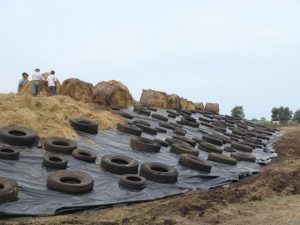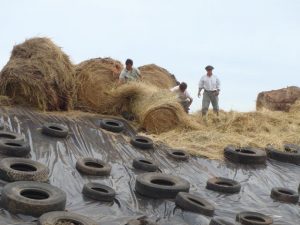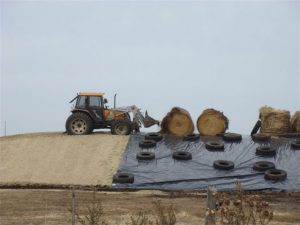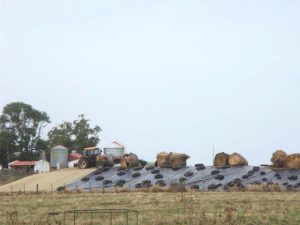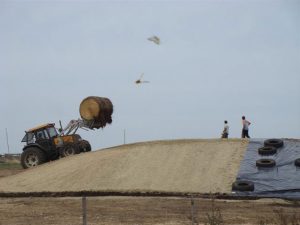Silage Covering
To keep the qualities of the chopped material inalterable, it is necessary to avoid oxygen entering the silo.
To achieve this, the silo should be covered immediately after it is finished and tightened correctly.
The ideal thing is to use 200 micron two-layered plastic canvas with treatment for ultraviolet rays over the ensiled forage and to weight it down with discarded tires, plastic pipes, large cans etc.
This prevents the covering from blowing away and oxygen from entering.
The canvas has to be in direct contact with the material because if the canvas flutters, oxygen gets in it is also necessary to prevent rain from entering the silo.
When the silo is left unprotected, there is a significant loss of ensiled material; rain water also has a negative effect on it since it dilutes the acids formed at the fermentation stage permitting the development of clostridia which brings about the appearance of micotoxins that have a negative impact on the production.
In an uncovered silo, it is common to see a plastered sector around it. The liquid forming this mud hole may be nutrients that were present in the ensiled forage but that rain washed away carrying them with it.
That is to say that the forage the animals will receive will have fewer than the necessary nutrients, all for not having been covered.

